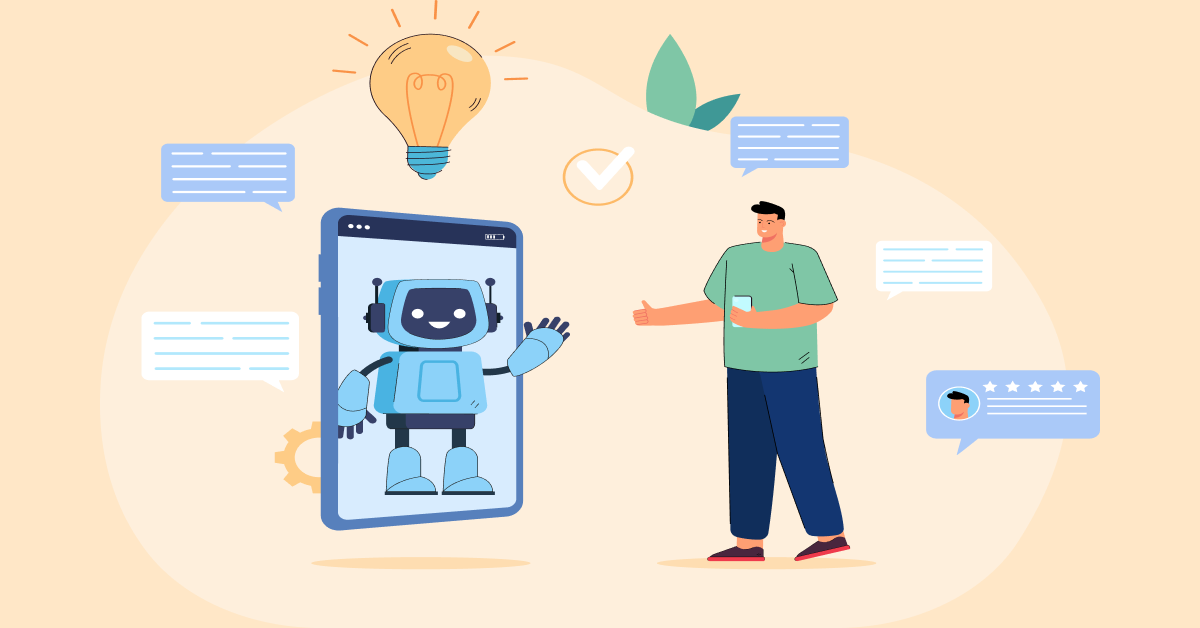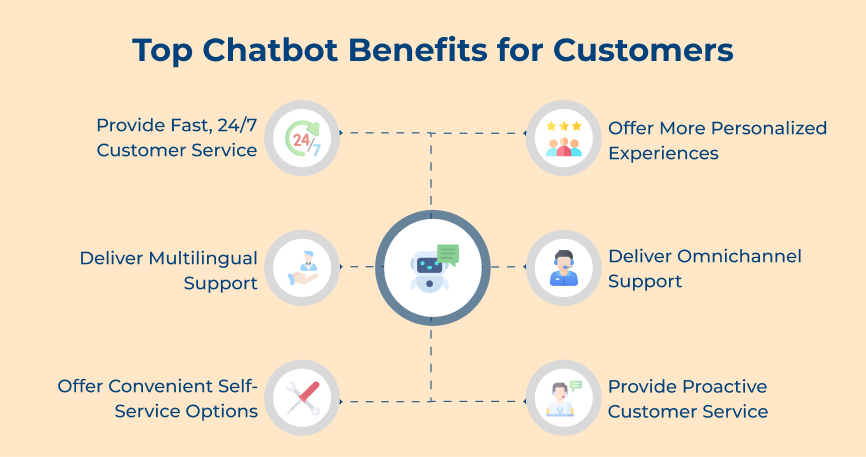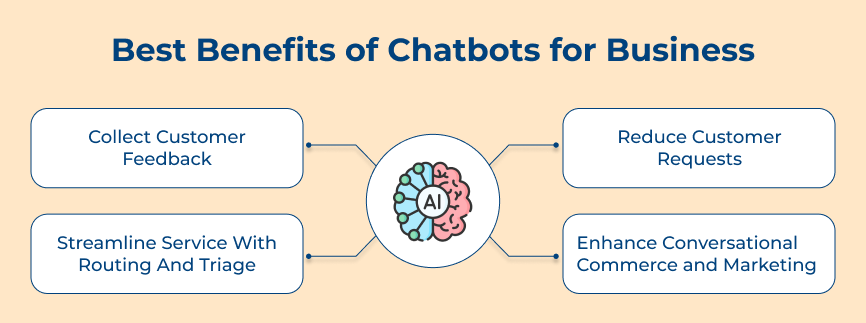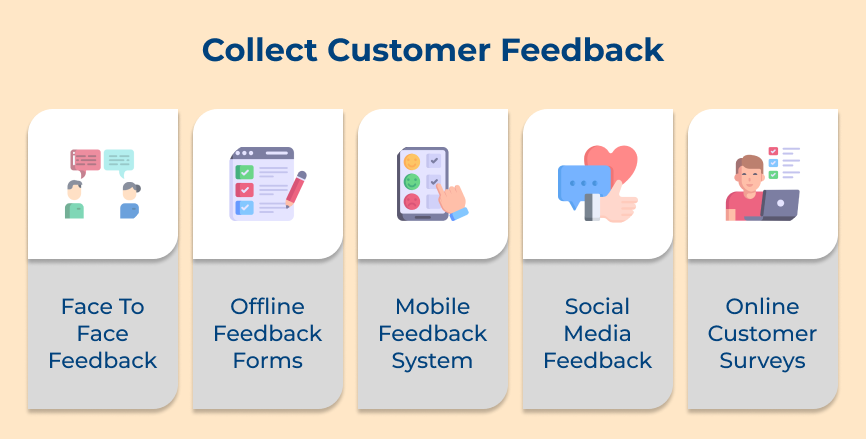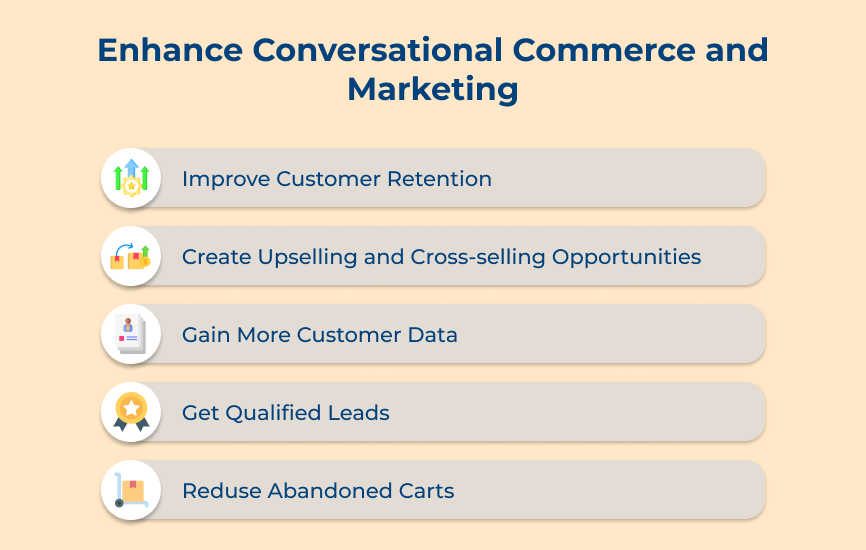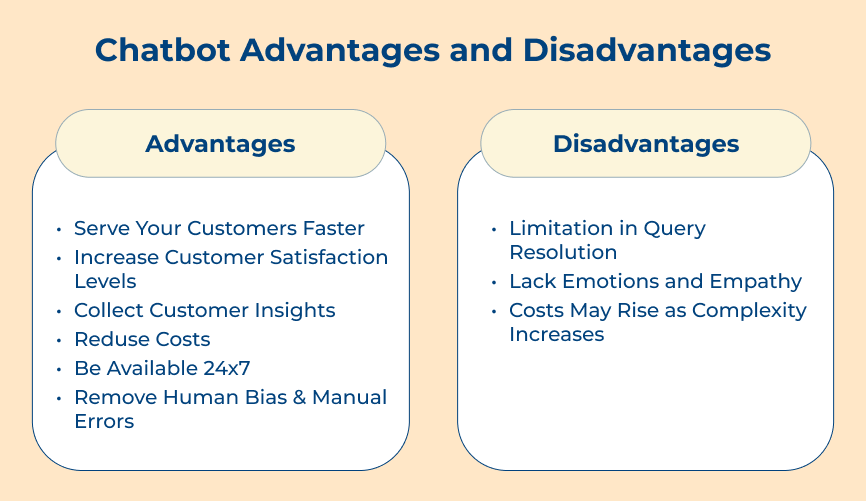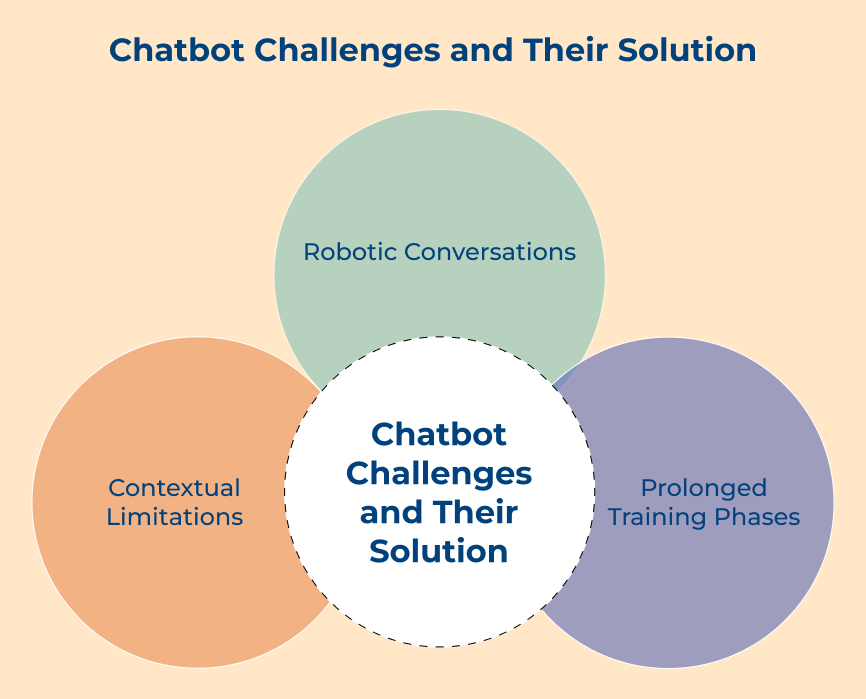1. Provide Fast, 24/7 Customer Service
Chatbots have revolutionized customer service with their ability to provide fast and efficient support to customers 24/7. 35% of people use chatbots to resolve complaints or obtain detailed information. Chatbot conversions ensure that customers receive immediate assistance without the need to wait for a human agent.
A great use case for chatbots is in e-commerce, where customers often require real-time assistance while shopping. Chatbots can provide product recommendations, answer frequently asked questions and guide customers through the purchasing process, all without delay.
Actionable tips:
- Personalize the experience: Tailor chatbot responses to match the customer’s tone and language, creating a more human-like interaction.
- Maintain a conversational flow: Train chatbots to understand natural language and hold context across multiple interactions, ensuring seamless conversations.
- Integrate with live chat support: Integrating chatbots with live chat support allows for a smooth transition to human agents when necessary, providing a personalized touch.
2. Offer More Personalized Experiences
Personalization in customer service is crucial because it enhances customer satisfaction and loyalty. Chatbots can analyze customer data to tailor conversations and offer recommendations based on customer expectations, previous interactions and purchase history. The personalization is what makes the modern customers feel valued and understood, leading to a better overall experience.
An example of how chatbots offer more personalized experiences is in the retail industry. Chatbots can suggest products based on a customer’s browsing history and preferences, providing real-time inventory information. It even assists them in making purchases. The personalized approach saves time for customers and increases the likelihood of them making a purchase.
Actionable tips:
- Use CRM: Integrate chatbots with the customer relationship management (CRM) system to access customer data and provide tailored recommendations.
- Use NPL: Use natural language processing to understand customer inquiries and respond in a conversational tone.
- Analyze and optimize: Continuously optimize the chatbot’s performance to improve personalization and customer satisfaction.
3. Deliver Multilingual Support
Delivering multilingual support is becoming increasingly important in the globalized world. Companies must be able to communicate with different customers in their preferred language. Chatbots provide an efficient and cost-effective solution for delivering multilingual support to customers. 69% of customers prefer chatbots for quick, multilingual conversations with brands.
The use case for multilingual chatbots is vast. They can be used in customer service to answer common questions, provide product information and assist with troubleshooting. They can also be integrated into e-commerce platforms to guide customers through the purchasing process in their native language, enhancing the user experience and increasing sales.
Actionable tips:
- Invest in language translation capabilities: Ensure the chatbot can accurately translate messages in real time to provide seamless customer communication in different languages.
- Customize responses based on cultural nuances: What may be an acceptable response in one culture may not be suitable for another, so it’s important to tailor the messaging accordingly.
- Regularly update and maintain language databases: Regularly update your chatbot’s language database to ensure accurate and up-to-date translations.
4. Deliver Omnichannel Support
Chatbots have revolutionized customer support by providing efficient and seamless assistance across various channels. One of the key advantages of chatbots is their ability to provide instant responses and support, eliminating the need for customers to wait for human agents. 74% of customers would choose a chatbot over a human agent to look for answers to simple questions.
A common use case for chatbots in delivering omnichannel support can be seen in social media platforms. Integrating chatbots with social media accounts allows businesses to provide instant support to customers who reach out through the channels. They work well when it comes to increasing customer satisfaction and loyalty.
Actionable tips:
- Personalize interactions: Customize chatbot responses to ensure a personalized experience for customers, making them feel valued and understood.
- Seamlessly handover to humans: Implement a smooth transition process from chatbots to human agents when necessary, ensuring a seamless customer experience.
- Continual improvement: Regularly analyze chatbot interactions and customer feedback to identify areas for improvement.
5. Offer Convenient Self-Service Options
Offering convenient self-service options has become increasingly important. Customers expect instant access to information and quick solutions to their problems. It is where chatbots come into the picture. Chatbots serve as computer programs that simulate human conversation, providing automated responses to customer queries.
Chatbots provide instant and round-the-clock support. Customers can easily access the information they need without having to wait for a human operator. Chatbots can handle multiple queries simultaneously. They are not limited by human capacity and can efficiently manage high volumes of customer interactions. It reduces wait times and ensures a faster resolution of customer issues.
Actionable tips:
- Create a knowledge base: Develop a comprehensive database of frequently asked questions and common customer concerns. It ensures the chatbot provides accurate and helpful responses to customer queries.
- Personalize the experience: Customize the chatbot’s responses to reflect the tone and personality of the brand. It will create a more engaging and authentic customer interaction.
- Continuously improve and update: Regularly review and update the chatbot’s responses based on customer feedback. It ensures the bot remains effective and up-to-date with any changes in the offerings.
6. Provide Proactive Customer Service
Chatbots are computer programs that use artificial intelligence to simulate human conversation. They are programmed to respond to customer inquiries and provide helpful information or resolve issues. One of the most popular benefits of chatbot is that it can improve customer satisfaction by providing instant responses and 24/7 support.
Chatbots save time for both customers and businesses by eliminating the need for lengthy phone calls or waiting for email replies. They can be used in various industries to handle common customer queries, provide product recommendations, process orders and even offer personalized experiences.
Actionable tips:
- Customize chatbot responses: Tailor chatbot responses to match the brand’s tone and style, ensuring a consistent customer experience.
- Anticipate customer needs: Analyze customer data to anticipate common queries and provide relevant information proactively.
- Continuously improve and update: Regularly assess and update the chatbot’s knowledge base to ensure it keeps up with evolving customer needs.
Best Benefits of Chatbots for Business
Let’s dive into the compelling benefits chatbots bring to the table and explore how they can become an invaluable asset for your organization.
